
views
- Keep crate training your dog until they’re 1 or 2 so they’re not as destructive when they’re left alone.
- Stop crate training your dog when they don’t whine about going in their kennel and when they stop having accidents at home.
- Try letting your dog be alone outside of their crate for short periods of time. If they behave and don’t have accidents, try leaving for longer stretches.
- Keep the crate with the door open after you train your dog since they’ll naturally use it as a comfortable place to rest.
Signs Your Dog Can Be Left Out

Your dog is at least 1–2 years old. Your puppy is the most destructive during the first couple years of their life, so keeping them in a crate keeps them and your belongings safe. Once your dog is around 1 or 2, they’ll usually mellow out and act well-behaved when you leave them on their own. Let your dog mature out of their energetic puppy phase before you leave them unsupervised. If you’re crate training an older dog, plan on using their crate for at least 8 consecutive months after you start training them.
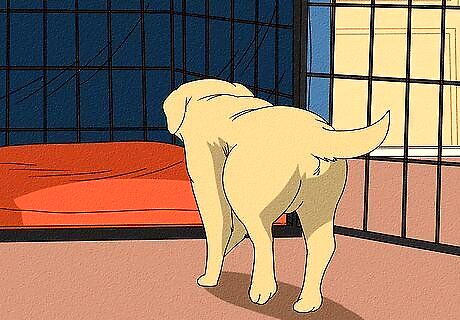
They willingly go into their crate. As you teach your pup to love their crate, they’ll see it as a relaxing den where they can rest and hide away. If you give your dog the command to kennel up and they go inside without a fuss, then it’s a good sign they’re used to the crate. Pay attention to if your dog goes in their crate on their own to sleep or relax too.

You don’t hear your dog whining when they’re in the crate. After you shut the crate’s door and leave the room, wait to see if your dog starts whining. Even if they whimper a little bit, give them a few seconds to see if they calm down. If your dog is quiet and relaxes when you put them in the cage, then they’re probably mellow enough to leave them out when you’re asleep or not at home.

You haven’t noticed any destructive behaviors. Puppies and some temperamental breeds may chew on your items or get into places where they shouldn’t be when you first start training them. Keep track of how well your dog behaves when you have them outside of their crate. When they get into something, be sure to stop the behavior immediately. If they never cause any trouble, then they’re probably mature enough to be left alone at home without locking them in the crate.
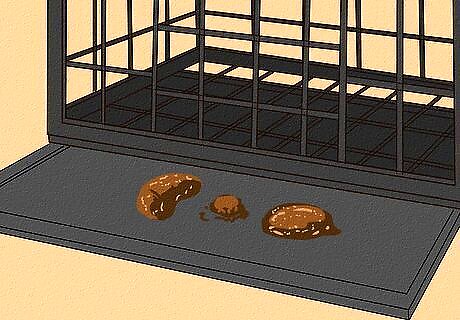
You haven’t had to clean up any potty accidents inside. If your dog still has accidents from time to time, then keep them in their crate so you don’t have to clean up any unexpected messes when you come home. When your dog doesn’t go potty inside of their crate or have any accidents on the floor, then you can probably stop crate training at night or when you’re away.
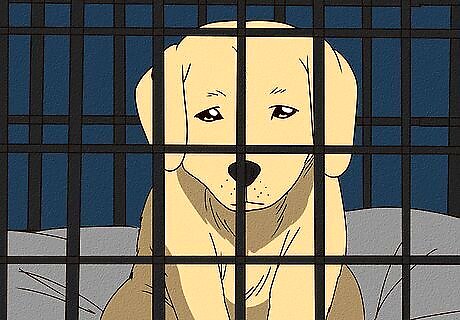
Your dog has severe anxiety around their crate. No matter how long you crate train a puppy, some dogs that have been abused or had a rough upbringing will still be resistant to the crate. Forcing your dog into a crate when they’re stressed out will only make them more afraid and panicked, and they could get hurt if they try to escape. It’s better to abandon crate training for the time being. Talk to a vet or behaviorist to help treat a dog with separation anxiety.
Do I need to stop crating my dog?
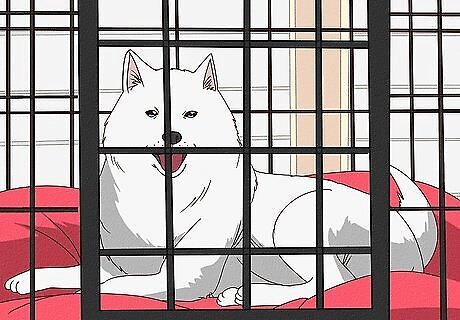
No, it's totally fine to continue using your dog’s crate. Even though it might seem like your dog will get bored inside of their crate, it’ll actually make them feel comfortable. When you crate train, your dog will associate their crate with being a safe den where they can go to relax. If you’re still worried about your dog misbehaving or having an accident when you’re not around, don’t hesitate to put them in their crate as you normally would. As long as your dog doesn’t fuss or whine, then you can relax knowing your dog can’t cause any trouble. You may want to keep smaller dog breeds in a crate at night or when you’re away since they have smaller bladders and are more likely to have accidents. Continuing to crate train has many additional benefits, including preventing accidents, limiting destructive behavior, and keeping your dog safely contained if you’re traveling.
How to Stop Crate Training
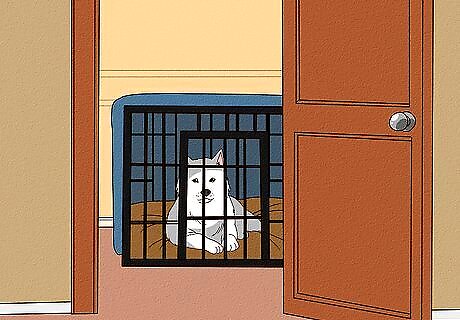
Keep the crate in a common room with its door open. Your dog sees their crate as a hideaway and it could stress them out if you get rid of it. Leave the crate in the room where you spend a lot of time so they can still go inside on their own and be close to you. Just don’t close the door behind them. Since your dog already feels comfortable inside their crate, they may stay in it while you’re away without having to give a command or shutting the door. If you want to stop crate training at night, keep the crate in your bedroom and cover the top and sides with a blanket. That way, the crate feels safer and more enclosed.

Leave your dog in an enclosed room when you go out. Rather than giving your dog roam freely throughout your home, choose a single room to keep them in at first. Try to pick a room with a hard floor, such as a kitchen, laundry room, or bathroom, so it’s easy to clean up any accidents they have. Keep your dog out of other rooms by closing the doors or putting a baby gate in the doorway. As your dog gets more comfortable while you’re away, slowly give them access to more rooms. Bring your dog’s crate into whatever room you’re keeping them in. Even if your dog gets a little stressed out, they can go back into their crate and feel at home.
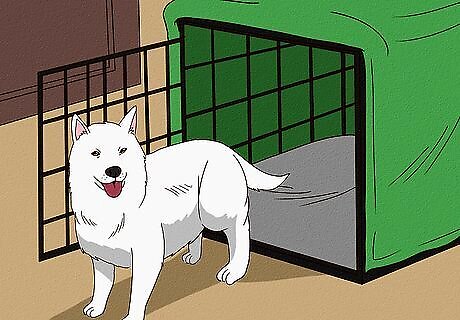
Start leaving your dog alone for longer periods of time. At first, leave your dog at home without locking them in their crate and go outside for about 10 minutes. When you come back in, ignore your dog for the first minute so they don’t get overly excited. Keep going out for 10-minute increments until your dog doesn’t react to you coming and going. After that, start going out for an hour at a time. Slowly increase how long you’re away as your dog gets more comfortable. If your dog starts acting overly excited again, take a step back and leave your dog unattended for less time. Once they feel relaxed, then try increasing the amount of time you’re away again. If your dog has an accident, clean it up right away and go back to putting them in the crate again when you leave. Next meal time, feed your dog where they had their accident so your dog learns not to go to the bathroom where they eat. Most dogs will sleep while you're asleep through the night, so just tell them a command like "Bedtime" when you're heading to bed. Your dog will get into the routine of going to your room and sleeping in their crate or bed.
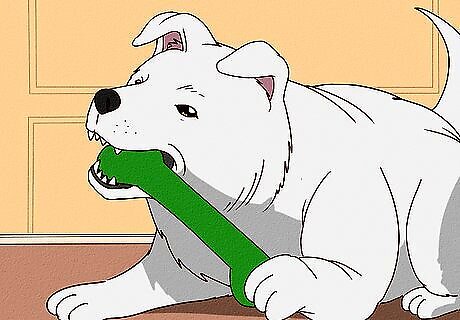
Give your dog mentally-stimulating toys when they’re alone. If your dog is home alone with a lot of energy, then they’re more likely to make a mess or misbehave. Keep your dog engaged by leaving a few new toys out they can play with. Try using treat puzzles, snuffle mats, or a ball launcher so your dog can tire themselves out without getting into trouble. Rotate your dog’s toys every few weeks so they don’t get bored.


















Comments
0 comment